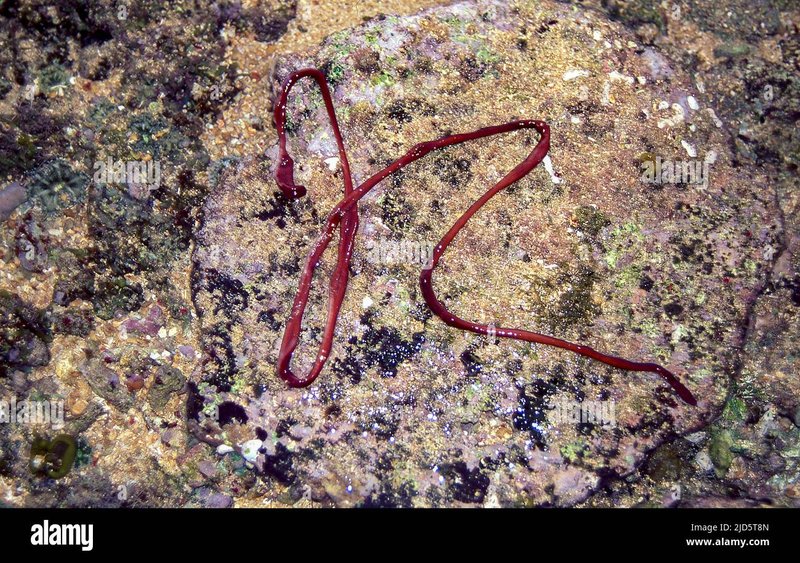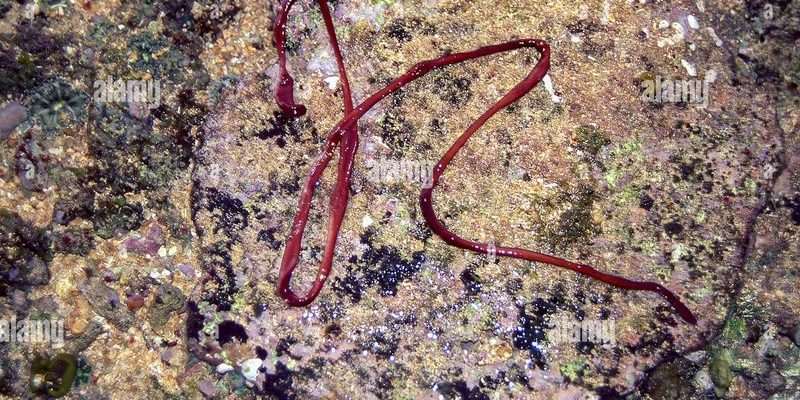
Ribbon worms are fascinating in both appearance and behavior. Picture this: they look like long, slender tubes that can stretch and contract. They range in color and can often be found burrowing into mud or sand. Though they might seem harmless, their predatory nature raises questions about their role in the marine ecosystem. So, how dangerous are they really to other creatures living in their watery world? Let’s break it down.
What Are Ribbon Worms?
To understand if ribbon worms are dangerous to other marine life, it’s essential to know what they are. Ribbon worms belong to the phylum Nemertea and can be found in oceans worldwide, from shallow coastal waters to deeper seas. They come in various lengths, some reaching up to 30 meters long! You might find them hiding amongst rocks or buried in the sediment.
These creatures have a unique body structure containing a long, slender shape that can be coiled up like a slinky. They possess a **proboscis**, which is a long, tube-like appendage that they use to catch food. The proboscis can shoot out rapidly, capturing prey with impressive speed and accuracy—like a javelin thrown by an athlete.
So, while they might look like harmless noodles floating through the water, there’s more going on beneath the surface. Understanding their biology helps clear up some of the concerns about their impact on other marine life.
How Do Ribbon Worms Hunt?
You may be intrigued by how ribbon worms find their dinner. Their hunting technique is quite fascinating. Ribbon worms primarily feed on small fish, crustaceans, and even other worms. When they sense a potential meal nearby, they use their proboscis to grab onto their prey.
But here’s where it gets a little more intense: many ribbon worms also produce toxins. These substances can paralyze or even kill the small animals they catch. Their ability to immobilize prey makes them effective hunters.
Think of it like a stealthy predator waiting in the shadows, ready to strike when the moment is just right. It’s not just about speed; it’s about using their environment and unique adaptations to snag a meal. This hunting behavior raises questions about the potential dangers they pose to other creatures roaming the ocean floor.
Are Ribbon Worms Predators or Prey?
The ocean is a vast ecosystem where predators and prey are constantly in a delicate dance. Ribbon worms certainly act as predators, taking down smaller animals. However, they also have their share of predators. Larger fish, crabs, and other marine animals may feast on ribbon worms when they catch them.
So, are ribbon worms dangerous? The short answer is yes, but it depends on the context. They can be lethal to smaller marine life, but they also play a role in the food web. By keeping populations of smaller creatures in check, they help maintain balance in the ecosystem.
This dynamic relationship showcases how important every creature is in the ocean. Even an unassuming ribbon worm contributes to the larger picture of marine life.
Impact on Marine Ecosystems
Understanding ribbon worms’ role in marine ecosystems is crucial. They help control the population of their prey, but their presence can also indicate environmental changes. For example, if ribbon worm populations boom, it might suggest an imbalance in the ecosystem, possibly due to overfishing or pollution.
Here’s the thing: keeping ecosystems healthy relies on many factors, including the harmony between predators and prey. Ribbon worms can serve as indicators of these changes, highlighting the delicate balance of marine life. Their importance stretches beyond just being a predator; they are part of a broader network that influences ocean health.
Can Ribbon Worms Affect Humans?
You might think, “Okay, but what’s the deal for humans?” While ribbon worms primarily affect other marine life, they can indirectly impact us, too. For instance, if these creatures disrupt local fish populations, it can lead to changes in fishing practices and local economies.
Additionally, some types of ribbon worms can possess toxins that are harmful to humans when ingested. While accidental encounters are rare, it’s essential to be cautious if you’re exploring tide pools or shallow waters.
Let’s not forget: we’re part of this ecosystem, and every creature—big or small—has its role. Recognizing the connections between all of us helps foster a better understanding of our impact and responsibility toward the oceans.
So, are ribbon worms dangerous to other marine life? In short, yes, they can pose a threat to smaller creatures due to their predatory nature and toxic abilities. However, they also play an essential role in maintaining the balance of the ocean’s food web. By understanding these fascinating animals, we gain insight into the complex and beautiful ecosystems they inhabit.
Next time you find yourself by the ocean, remember that there’s a whole world beneath the waves—filled with surprising creatures like ribbon worms. They might be dangerous to small fish, but they’re also crucial to our planet’s health. It’s a reminder of how interconnected we all are in this great big ocean we call home!

